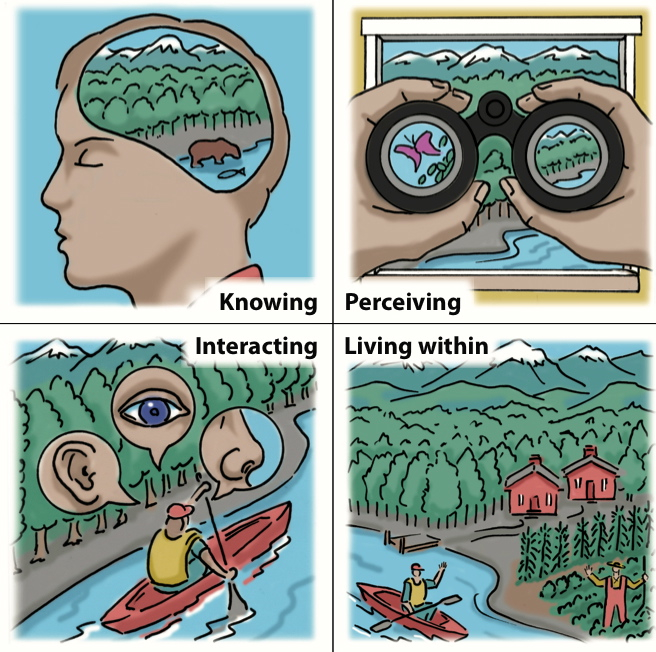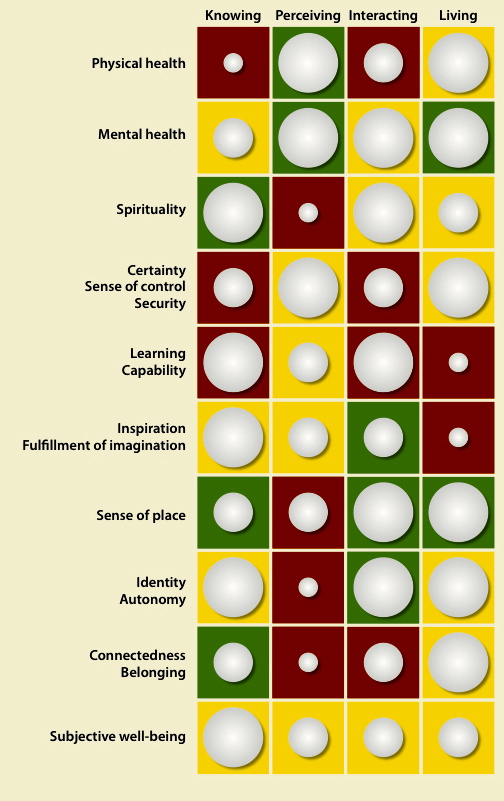
NCEAS Documents Intangible Effects of Nature on Well-Being


Nature may turn out to be the best medicine when it comes to human well-being. Providing such necessities of life as food, water and shelter, nature not only underpins and controls the conditions in which people live, it also provides important intangible benefits. A new synthesis of multidisciplinary peer-reviewed research identifies the ways in which nature’s ecosystems deliver crucial benefits — and thus contribute culturally and psychologically to human well-being in nonmaterial ways.
The research was conducted by a working group of UC Santa Barbara’s National Center for Ecological Analysis and Synthesis (NCEAS). The findings are published in the Annual Review of Environment and Resources.
The study brings together diverse research and highlights gaps in our understanding of these vital connections.
“Many of these bits of information are out there, but they’re scattered across disciplines with dramatically different ways of knowing and doing research,” said lead author Roly Russell, of the Sandhill Institute for Sustainability and Complexity in British Columbia. “We hoped that we could make a first attempt at bringing together these disparate pieces of research into a cohesive whole that could help demonstrate just how pervasive the intangible connections of this relationship between nature and human well-being are.”
According to co-author Kai M.A. Chan of the University of British Columbia, such cultural ecosystem services represent psychological, philosophical, social and spiritual links between people and ecosystems, which are at the very core of human preferences and values.
For example, clinical trials have shown that patients recovering from heart attacks progress more rapidly when they can see trees outside their hospital room windows or — even though the effect is lessened — plasma screens with the same views of nature. These are tangible physiological effects of experiencing nature mediated through intangible connections to nature — in this case, seeing it.
“While assessing the intangible benefits we experience from nature is difficult using traditional methods, it is possible and important,” said Frank Davis, director of NCEAS. “These findings are a significant step toward developing a fuller understanding of human connectedness to nature.”
Using a conceptual framework, the nine-member research team organized the literature by delineating the channels of experience through which people connect with nature — knowing, perceiving, interacting with and living within — and then exploring how those channels link to various components of human well-being.
To initiate the process of documenting these intangibles, the researchers used 10 constituents to structure and organize their synthesis: physical health, mental health, spirituality, certainty and sense of control and security, learning/capability, inspiration/fulfillment of imagination, sense of place, identity/autonomy, connectedness/belonging and subjective (overall) well-being.
Empirical data varied widely. The literature in the area of physical health indicates that experiences of nature in various forms result in positive health responses. Similarly, mental-health literature supports the role of natural settings in reducing stress and increasing patience, self-discipline, the capacity for attention, and recovery from mental fatigue, crisis or psychophysiological imbalance.
The review of literature pertaining to learning and capability also showed some empirical results that suggest interactions with nature provide a significant benefit to human cognition. Encounters with nature also contribute positively to the creation of the identity of individuals as well as those of communities and have been shown to contribute a sense of connection to something greater than oneself and to the natural world.
The literature for other constituents is less definitive. The majority of citations for certainty and sense of control and security addressed “the ways in which natural systems degrade well-being through a lack of control and security, and fear.” While sense-of-place literature focuses on more intimate channels of interaction, the bulk of the literature favors interacting and living-within channels more than knowing and perceiving.
Peer-reviewed literature for spirituality, inspiration/fulfillment of imagination and subjective (overall) well-being remain scarce largely because many of the richest sources of this kind of data are not typically published in traditional journals.
In the synthesis of available empirical literature regarding the contributions of ecosystems, the research team ultimately hopes to bring appropriate attention to these important intangible benefits.
The team also sought to identify what aspects of these relationships have been well studied and what aspects remain hypotheses that are poorly explored empirically.
“We concluded that though there are significant gaps in empirical research, the weight of the literature shows clearly that connections to nature contribute positively to our health and happiness,” said co-author Anne Guerry, lead scientist of the Natural Capital Project and a researcher at the Stanford Woods Institute for the Environment.
Additional authors are Patricia Balvanera of the National Autonomous University of Mexico, Rachelle K. Gould of Stanford University, Xavier Basurto of Duke University, and Sarah Klain, Jordan Levine and Jordan Tam of the University of British Columbia.
This work was conducted as a part of the Cultural Ecosystem Services Working Group supported by NCEAS, a center funded by the National Science Foundation, UCSB and the state of California.



